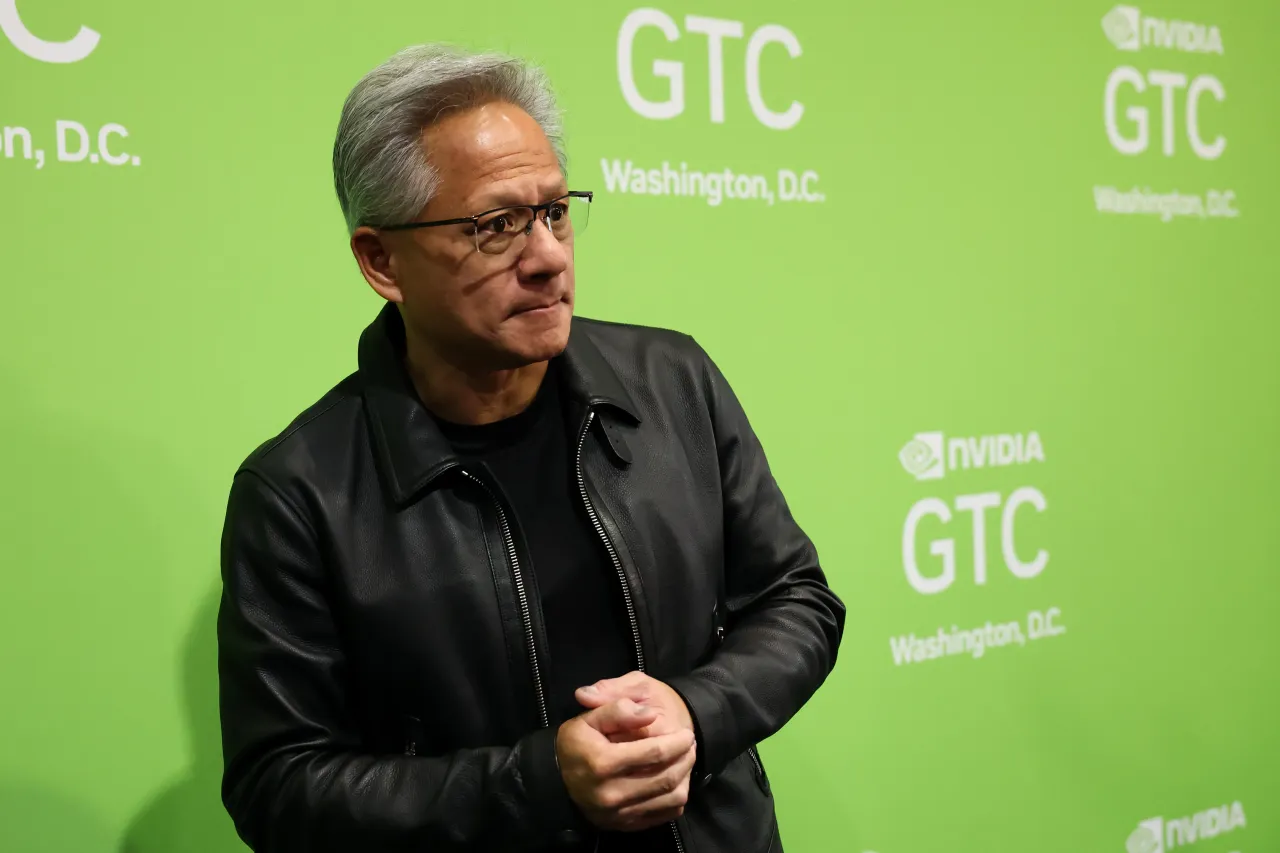Advertisement|Remove ads.
Nvidia Mania Deepens: Wedbush Calls Its Chips The ‘New Oil’ As $500B AI Backlog Fuels Bulls

- Wedbush’s Daniel Ives says Nvidia’s GPUs remain a critical part of the tech ecosystem.
- According to Gene Munster, there is likely at least 15% revenue upside for Nvidia relative to the consensus over the next five quarters.
- Retail traders have already set their sights on the $300 mark for the stock.
Artificial intelligence (AI) chipmaker Nvidia Corp.’s (NVDA) stock climbed nearly 5% on Tuesday, going past the $200 threshold for the first time, following CEO Jensen Huang’s keynote at the Washington leg of the company’s GTC conference.
Thanks to Nvidia’s recent momentum, the company’s valuation is fast approaching $5 trillion.
Wedbush Details GTC Takeaways
Following the event, Wedbush analyst Daniel Ives said, despite the rising rivalry from AMD and Qualcomm, “Nvidia's chips remain the new oil or gold in this world for the tech ecosystem, as there is only one chip in the world fueling this AI Revolution...and it's Nvidia.”
Calling Huang the “Godfather of artificial intelligence (AI),” Ives said his announcements across AI, robotics, quantum, and telecommunications, along with his commentary that the company is entirely focused on advancing the future of AI, underscore that Nvidia’s GPUs remain a critical part of the tech ecosystem.
The analyst noted that the company announced Grace Blackwell NVL72 (GB200 NVL72) as it focuses on “optimizing its infrastructure into one giant rack through extreme codesign to meet the growing number of AI applications and provide greater value with 10x performance per dollar, 10x performance per watt, 10x throughput and 10x revenue per GPU at 10x lower cost.”
Nvidia also disclosed at the conference that it has $500 billion in Blackwell and Rubin revenue backlog through 2026, based on expectations for 20 million GPU sales, Ives said, adding that this is 10 times the lifetime value of the previous Hopper architecture. Rubin will be in production at this time next year, he noted.
The analyst also mentioned the launch of “Omniverse DSX Blueprint for Gigascale AI factory buildouts by providing a comprehensive blueprint for designing and operating these facilities to maximize throughput.”
Among the other announcements by Huang are an updated version of Blackwell, an updated quantum computing platform, and updates to its compute platform, robotics, and more, Ives said.
More Analysts Chime In
Cantor Fitzgerald said it maintained an ‘Overweight’ rating and $300 price target for Nvidia stock, noting the company’s new partnerships for AI infrastructure and Physical AI, and the Department of Energy (DoE) partnership to build seven new supercomputers, among others, the Fly reported. The firm's analysts believe the estimates for Nvidia are “way too low.” Notwithstanding AI bubble concerns, Nvidia is “too inexpensive to ignore,” given its stock trades at only 21 times Cantor’s updated earnings per share (EPS) upside of $9-$10.
Deepwater Asset Management’s Gene Munster said Huang’s comments on a $500 billion backlog through 2026 signal 15% revenue upside for Nvidia over the next five quarters. This excluded any incremental revenue contribution from China. Munster’s 15% growth estimate assumes that capacity is available and $41 billion contribution from the networking business.
Munster expects the upside to grow as Nvidia continues selling, but flagged supply as a critical factor. “If they can make them, it sounds like they're on track to beat the current Street numbers for CY26 by more than 20%; If they don't make enough, that's good news for CY27,” he added.
What’s Retail Is Feeling About Nvidia’s GTC
On Stocktwits, Nvidia was the top trending equity ticker by late Tuesday, and the optimism has spilled over to other companies in the AI supply chain, including Oracle (ORCL), TSMC (TSM) and Super Micro Computer (SMCI).
Retail sentiment toward Nvidia improved to ‘extremely bullish’ by late Tuesday, from ‘bullish’ the day before, and the retail chatter increased to an ‘extremely high’ level. The message volume over the 24 hours leading up to late Tuesday spiked by 3,420%.
A bullish user noted that Nvidia stock isn’t expensive and said $300 could be in the cards next year.
Another user predicted a stock move to $210-$215 on Wednesday.
For the year-to-date period, Nvidia stock has soared about 50%, outperforming the broader market, the tech sector, and the semiconductor industry.
For updates and corrections, email newsroom[at]stocktwits[dot]com.
Read Next: Nvidia, Uber Partner To Roll Out 100,000 Robotaxis Starting 2027









/filters:format(webp)https://st-everywhere-cms-prod.s3.us-east-1.amazonaws.com/Getty_Images_157556380_fotor_20241211028_85dd179955.jpg)
/filters:format(webp)https://st-everywhere-cms-prod.s3.us-east-1.amazonaws.com/unnamed_jpg_9dff551b50.webp)
/filters:format(webp)https://news.stocktwits-cdn.com/large_Jensen_Huang_jpg_0ccfe634b0.webp)
/filters:format(webp)https://news.stocktwits-cdn.com/large_resized_pepsi_bottle_image_for_varun_beverages_jpg_2981a02025.webp)
/filters:format(webp)https://st-everywhere-cms-prod.s3.us-east-1.amazonaws.com/large_rivian_stock_logo_resized_10cce2eb8c.jpg)
/filters:format(webp)https://news.stocktwits-cdn.com/vivekkrishnanphotography_58_jpg_0e45f66a62.webp)
/filters:format(webp)https://news.stocktwits-cdn.com/large_pharma_stock_jpg_c9a7452f1f.webp)
/filters:format(webp)https://news.stocktwits-cdn.com/IMG_8805_JPG_6768aaedc3.webp)
/filters:format(webp)https://news.stocktwits-cdn.com/large_pharma_stock_jpg_490939e580.webp)